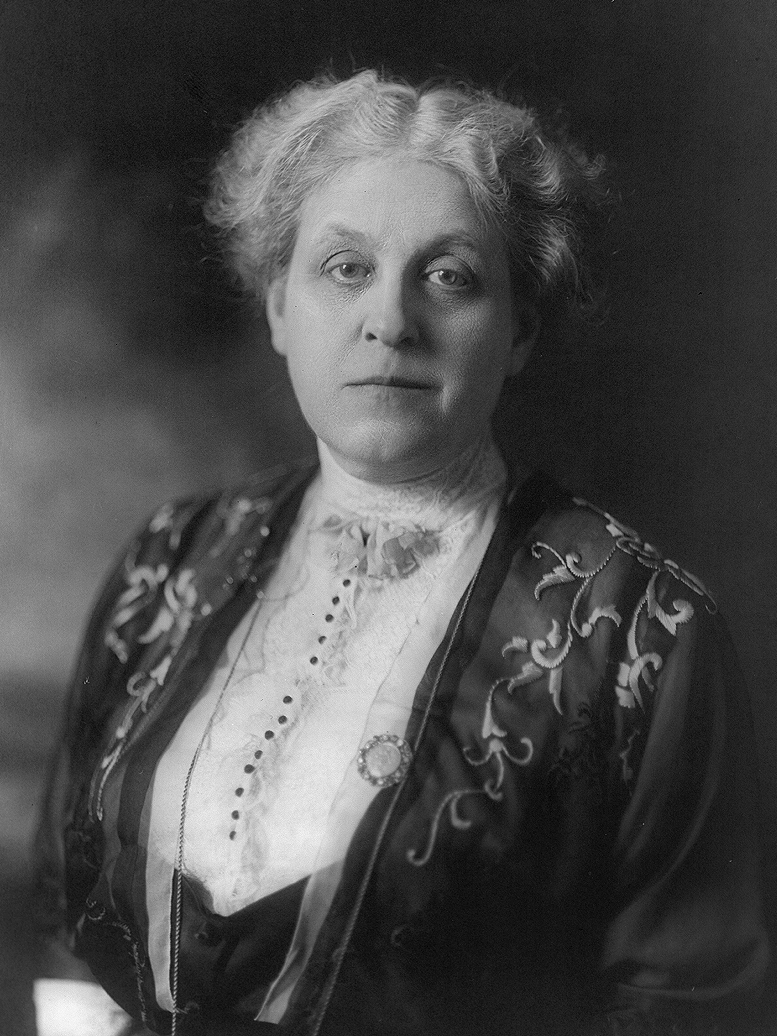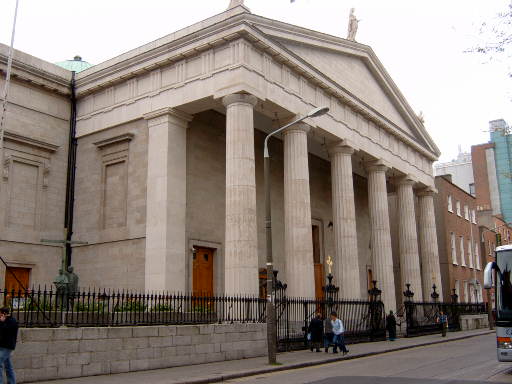|
Irish Housewives Association
The Irish Housewives Association (IHA) was an influential pressure group founded in 1942 to speak out about injustices and the needs of Irish women, inside and outside the home.Hilda Tweedy obituary, ''Irish Times'', 9 July 2005. The organization continued until 1992, when it dissolved itself. History The IHA was founded by Hilda Tweedy along with Andree Sheehy-Skeffington, Susan Manning, and Louie Bennett. The group organized a 'Housewives Petition' sent to the Government before Budget Day in 1941. Later that year over 600 additional signatures were collected. Initially known as the Irish Housewives Committee, the group was formed at a meeting on 12 May 1942. They initially campaigned for school meals, free travel for pensioners, and consumer protection. In 1946 the organization renamed itself Irish Housewives Association. In 1947, the IHA affiliated to the International Alliance of Women. Members of IHA, Beatrice Dixon and Kathleen Swanton began a campaign to have women serve o ... [...More Info...] [...Related Items...] OR: [Wikipedia] [Google] [Baidu] |
Hilda Tweedy
Hilda Tweedy, ''née'' Anderson (1911–2005) was an Irish women's rights activist. A founding member and leader of the Irish Housewives' Association (IHA), she was active for decades advocating for the rights of women on a diverse number of issues including equal pay, girls' education, recycling, the marriage bar (an Irish law that required a woman employed in the civil service to resign her position when she married), the right of women to serve on juries, and other issues. Life Hilda Anderson was born in Clones, County Monaghan on 26 August 1911.She was the eldest of three girls born to Rev. James Ferguson Anderson and Muriel Frances Victoria Swayne. She was educated at Alexandra College. After leaving school she joined her parents in Egypt. From 1929 to 1936 she lived in Egypt, starting a PNEU school in Alexandria, and reading for an external mathematics degree from the University of London. In 1936 she married Robert Tweedy in Egypt, and returned to Dublin. Tweedy was ref ... [...More Info...] [...Related Items...] OR: [Wikipedia] [Google] [Baidu] |
International Alliance Of Women
The International Alliance of Women (IAW; french: Alliance Internationale des Femmes, AIF) is an international non-governmental organization that works to promote women's rights and gender equality. It was historically the main international organization that campaigned for women's suffrage. IAW stands for an inclusive, intersectional and progressive liberal feminism. IAW's principles state that all genders are "born equally free nd areequally entitled to the free exercise of their individual rights and liberty," that "women’s rights are human rights" and that "human rights are universal, indivisible and interrelated." IAW is traditionally the dominant international non-governmental organization within the liberal (or bourgeois) women's movement. The basic principle of IAW is that the full and equal enjoyment of human rights is due to all women and girls. It is one of the oldest, largest and most influential organizations in its field. The organization was founded as the Int ... [...More Info...] [...Related Items...] OR: [Wikipedia] [Google] [Baidu] |
Beatrice Dixon
Beatrice Dixon (17 August 1916 – 16 March 2005) was an Irish pioneer of women's participation in public life, and served as the first woman juror in Ireland. Early life and family Beatrice Dixon was born Beatrice Butler in Dublin on 17 August 1916. She was the younger of the two daughters of James Bayley Butler and Katherine Butler (née McWeeney). Her older sister was Sister Katherine Butler. Her maternal uncle was Edmund J. McWeeney, a professor in pathology in University College Dublin (UCD). Dixon was educated at Alexandra School, Dublin and then the Ursuline convent, Waterford. After school, she worked in her father's manufacturing company, Biotox. She went to England in 1944, joining the Women's Auxiliary Air Force and worked as a meteorological observer in North Devon and Wiltshire. After World War II, she moved to London for two years and served as a prison visitor in Holloway women's prison. She married Frederick E. Dixon, a meteorologist on 19 April 1950. They had ... [...More Info...] [...Related Items...] OR: [Wikipedia] [Google] [Baidu] |
Dictionary Of Irish Biography
The ''Dictionary of Irish Biography'' (DIB) is a biographical dictionary of notable Irish people and people not born in the country who had notable careers in Ireland, including both Northern Ireland and the Republic of Ireland.Dictionary of Irish Biography 9 Volume Set History The work was supervised by a board of editors which included the historian . It was published as a nine-volume set in 2009 by |
John Charles McQuaid
John Charles McQuaid, C.S.Sp. (28 July 1895 – 7 April 1973), was the Catholic Primate of Ireland and Archbishop of Dublin between December 1940 and January 1972. He was known for the unusual amount of influence he had over successive governments. Early life and education John Charles McQuaid was born in Cootehill, County Cavan, on 28 July 1895, to Eugene McQuaid and Jennie Corry. His mother died a week after his birth. His father remarried and McQuaid's new wife raised John and his sister Helen as her own. It was not until his teenage years that John learned that his biological mother had died. He was a stellar student at the Cootehill National School.quoted in article "Inspired Educator and Ecumenist of Sorts" by Michael O'Carroll CSSp in Studies Quarterly Review, Vol 87, No 348 After primary school, McQuaid attended St. Patrick's College in Cavan Town and then Blackrock College in Dublin, run by the Holy Ghost Fathers, where he received average grades. In 1911 he entere ... [...More Info...] [...Related Items...] OR: [Wikipedia] [Google] [Baidu] |
National Women's Council Of Ireland
The National Women's Council of Ireland (NWCI) is a representative organisation for women and women's groups in Ireland. It was originally known as the Council for the Status of Women. Policies The mission of the NWCI is to achieve women's equality and empower women to work together to remove inequalities. It says it represents some 300,000 women in the Republic of Ireland. The NWCI has worked progressively to deepen and broaden its membership base to represent a broad range of women's interests in Ireland. It was and is instrumental in setting the agenda for women's rights in Ireland. Alongside other organisations it advocated against austerity measures aimed at lone parents and other vulnerable groups of women. The NWCI experienced significant cuts in funding over the period of austerity. In recent times the NWCI has particularly focused on issues including women's mental health, violence and holding the Irish government to account through the CEDAW process. In November 2020 ... [...More Info...] [...Related Items...] OR: [Wikipedia] [Google] [Baidu] |
Women's Organisations Based In Ireland
A woman is an adult female human. Prior to adulthood, a female human is referred to as a girl (a female child or adolescent). The plural ''women'' is sometimes used in certain phrases such as "women's rights" to denote female humans regardless of age. Typically, women inherit a pair of X chromosomes, one from each parent, and are capable of pregnancy and giving birth from puberty until menopause. More generally, sex differentiation of the female fetus is governed by the lack of a present, or functioning, SRY-gene on either one of the respective sex chromosomes. Female anatomy is distinguished from male anatomy by the female reproductive system, which includes the ovaries, fallopian tubes, uterus, vagina, and vulva. A fully developed woman generally has a wider pelvis, broader hips, and larger breasts than an adult man. Women have significantly less facial and other body hair, have a higher body fat composition, and are on average shorter and less muscular than men. Througho ... [...More Info...] [...Related Items...] OR: [Wikipedia] [Google] [Baidu] |
Organizations Established In 1942
An organization or organisation (Commonwealth English; see spelling differences), is an entity—such as a company, an institution, or an association—comprising one or more people and having a particular purpose. The word is derived from the Greek word ''organon'', which means tool or instrument, musical instrument, and organ. Types There are a variety of legal types of organizations, including corporations, governments, non-governmental organizations, political organizations, international organizations, armed forces, charities, not-for-profit corporations, partnerships, cooperatives, and educational institutions, etc. A hybrid organization is a body that operates in both the public sector and the private sector simultaneously, fulfilling public duties and developing commercial market activities. A voluntary association is an organization consisting of volunteers. Such organizations may be able to operate without legal formalities, depending on jurisdiction, includin ... [...More Info...] [...Related Items...] OR: [Wikipedia] [Google] [Baidu] |



.jpg)